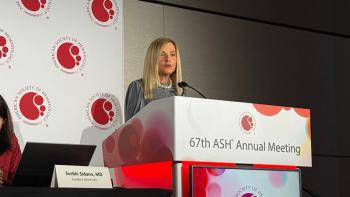
Dr Michael Thase: Patient Characteristics, Biomarkers That Guide Treatment for MDD
The easiest to treat patients are those who have not been ill too long, who don’t have a lot of complicating conditions, who have become depressed at a time in their life where there are clear cut, stressful factors, and who have ample social support, explained Michael Thase, MD, professor of psychiatry and director of the Mood and Anxiety Program at the University of Pennsylvania.
The easiest to treat patients are those who have not been ill too long, who don’t have a lot of complicating conditions, who have become depressed at a time in their life where there are clear cut, stressful factors, and who have ample social support, explained Michael Thase, MD, professor of psychiatry and director of the Mood and Anxiety Program at the University of Pennsylvania.
TranscriptAre there patient characteristics or biomarkers that guide treatment protocol for patients with major depressive disorder?
The easiest to treat patients are the ones who have not been ill too long, who don’t have a lot of complicating conditions, who have become depressed at a time in their life where there are clear cut, stressful factors, and who have ample social support, and these folks have good prognoses, they have good prognostic disorders. The earlier the illness takes hold in life, the more complicating conditions you’re likely to have, the less likely you are to have acquired a family and a good job and a good insurance plan, and the things that go along with having a good prognosis.
So, these king of early onset chronicity and complexity go along with people who definitely need more intensive treatment plans—psychotherapy as well as pharmacotherapy, sometimes occupational or vocational assistance and rehabilitation. One thing Freud got right is that love and work are the kind of cornerstones to human well-being, and depression is an illness that can reduce your capacity to be sustained in love relationships and to be able to work effectively.
Newsletter
Stay ahead of policy, cost, and value—subscribe to AJMC for expert insights at the intersection of clinical care and health economics.








































